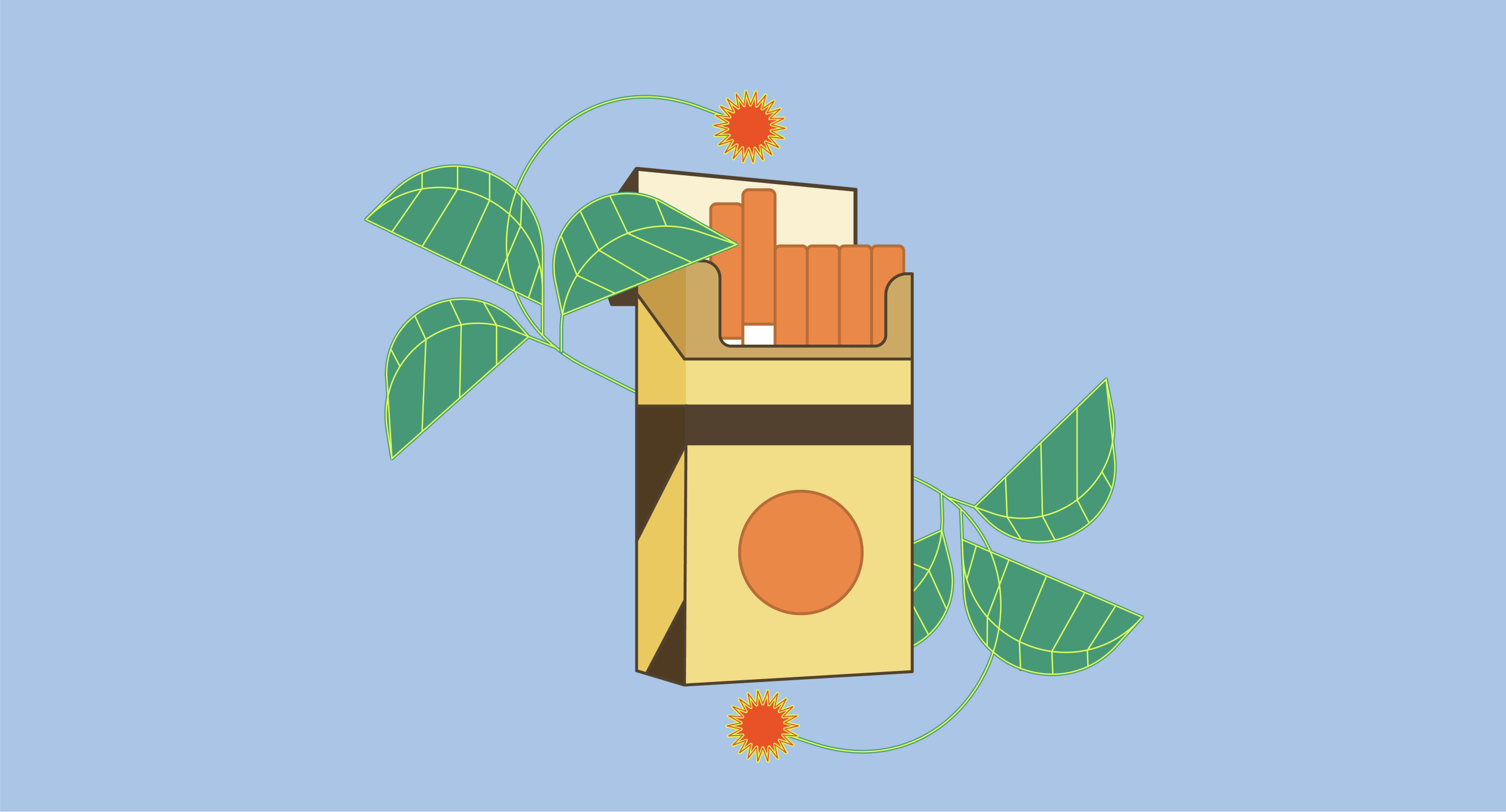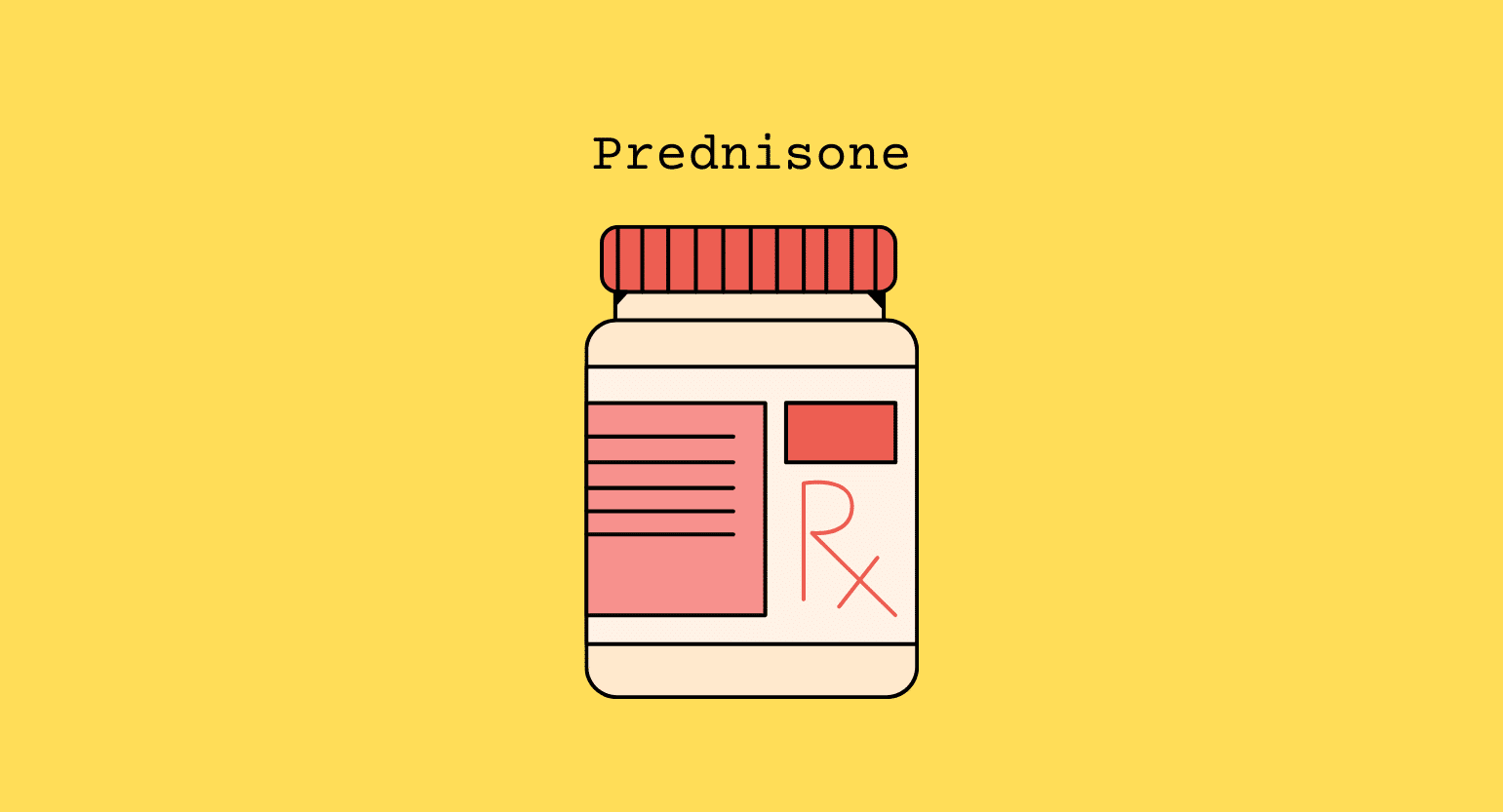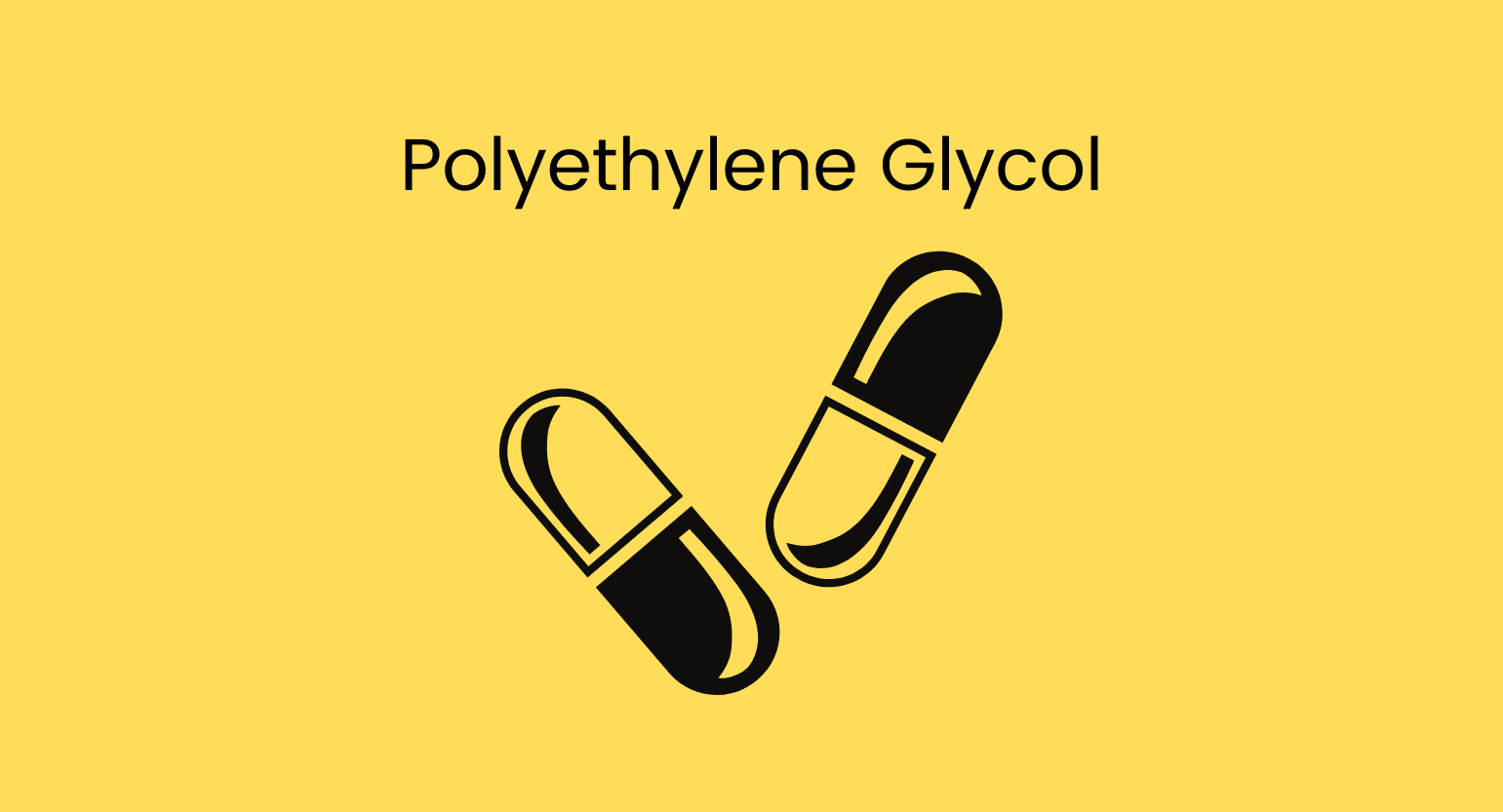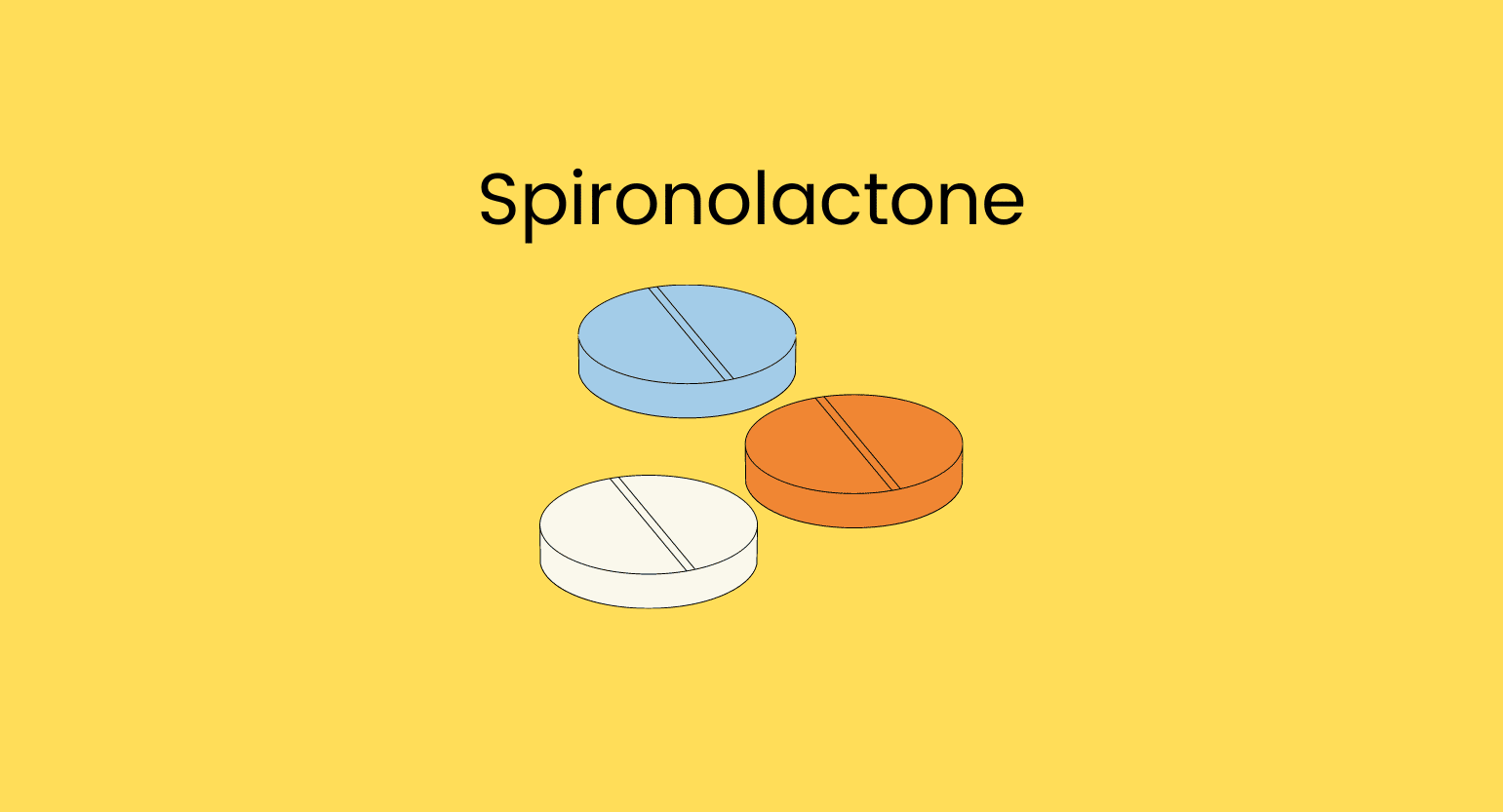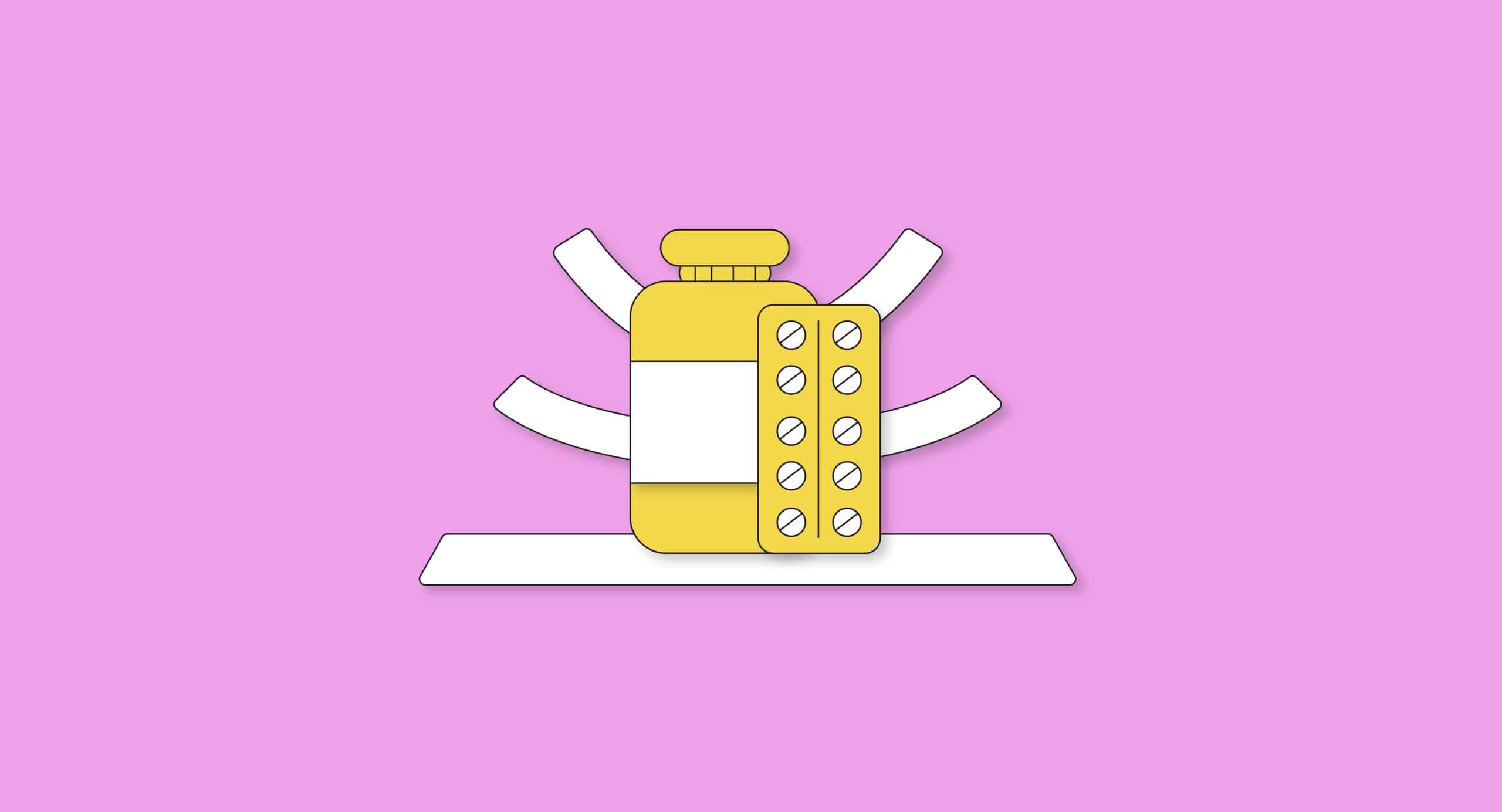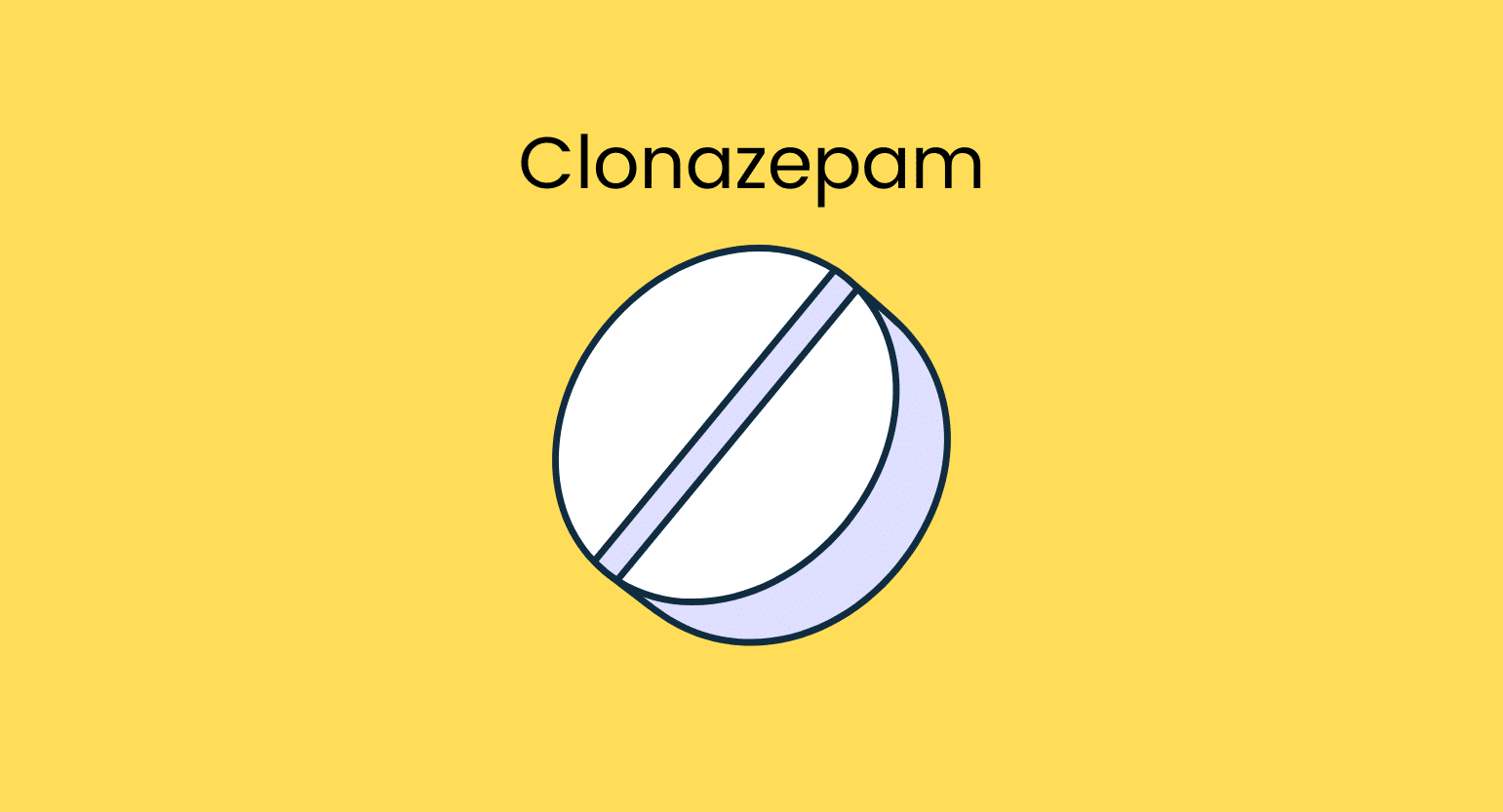Does Kratom Interact With Coffee?
Kratom and coffee may have similar or opposite effects. Thus, the combination may be additive or subtractive, depending on factors like dose, strain, and method of intake of these drugs. Kratom and coffee interact with each other in the following manner.
Coffee Enhances the Effects of Kratom (Agonistic Interaction)
When two drugs that have similar effects on the body are taken simultaneously, there’s a chance that they will increase each other’s effects. This phenomenon is known as an agonistic interaction.
Coffee blocks adenosine receptors in the central nervous system [3], promoting alertness and wakefulness. Kratom acts on the noradrenaline system, causing increased concentration and energy when taken in lower doses. Thus, the effect of kratom and coffee may overlap, leading to an agonistic interaction and an increased risk of side effects.
Coffee inhibits adenosine receptors in the part of the brain preparing for sleep, but it does not decrease the production of adenosine itself. The body makes more since the current amount isn’t working.
Once the effect of coffee wears off, an increased amount of adenosine will bind to the adenosine receptors, which may induce tiredness. In this way, an unusually high dose of coffee may cause sedation as the caffeine fades.
Thus combining low doses of the two drugs can have an overall stimulatory effect that may not be optimal. Taking kratom and coffee together can cause agitation, heart palpitations, jitteriness, and distractibility. However, combining high amounts of these drugs will have severe sedative effects.
Coffee Reduces the Effects of Kratom (Antagonistic Interaction).
An antagonistic interaction happens when two drugs that have opposite effects on the body are taken together. This type of interaction could also arise from a drug inhibiting the other drug’s absorption and effectiveness.

Let us take an example of the combination of high-dose kratom (more than 8 grams) and coffee. In this situation, the high dose of kratom behaves as a sedative, and coffee is a stimulant. This will cancel out or greatly diminish the effects of one of them (antagonistic interaction). Antagonism holds even if a low dose of kratom (less than 5 grams) and a high dose of coffee (more than 400 mg) are combined, though not until the caffeine wears off. For a while, this would still be an antagonistic interaction.
These drugs have different metabolism pathways; kratom is mainly metabolized by CYP3A4, CYP2C9, and CYP2D6 [1], whereas coffee is metabolized by CYP1A2 [2]. In short, there is no metabolic competition between these two substances.
Kratom & Coffee Interactions
Caffeine belongs to the methylxanthine class of central nervous system stimulants [4].
Other compounds that belong to this group and interact with kratom are as follows:
- Aminophylline
- Diphylline
- Theobromine
- Theophylline
Is It Safe To Take Kratom With Coffee?
These two drugs act on different receptors and have different metabolic pathways but can have similar effects. Small doses of these drugs in combination are unlikely to be lethal or cause anything more than uncomfortable side effects. However, it’s best to consult your doctor before taking kratom and caffeine together.
Taking them together will either enhance or decrease the effect of these drugs, as described in the above paragraphs. It’s best to take these drugs at different times.

The half-life of coffee is about 3 hours, and kratom’s is 20 hours. So, taking kratom at least 3 hours after drinking coffee would be best. This will decrease the potential chances of experiencing agitation or distractibility.
Taking coffee at a different time has a significant advantage for kratom users. Taking low-dose coffee can help reduce the dependence on kratom and prevent the development of kratom tolerance.
What Is Coffee?
The coffee plant belongs to the genus Coffea. Within the genus, there are around 500 genera and 6000 species. There are approximately 25 to 100 species of coffee plants. The size of the plant can range from small shrubs to large trees. There are two important coffee species in the commercial coffee industry: Arabica and Robusta.
Arabica trees are costly to cultivate because the ideal terrain for their production is steep (2000 to 6000 feet above sea level). Also, these trees are more disease prone and require more care and attention. Robusta trees are grown in central and western Africa and Southeast Asia. Robusta is cheaper to cultivate, is less disease-prone, and can withstand high temperatures of up to 85℉ [5].
When we encounter the term coffee, we understand the brewed drink prepared from roasted beans obtained from the coffee plant.
We know caffeine has several mechanisms of action [6]:
- Antagonism of benzodiazepine receptors
- Blockade of adenosine receptors
- Inhibition of phosphodiesterase
- Release of calcium from various intracellular stores
Caffeine Specs

| Drug Name | Coffee/ Caffeine |
| Trade Name | N/A |
| Classification | Methylxanthine class of CNS stimulants |
| CYP Metabolism | CYP1A2 |
| Interaction With Kratom | Agonistic or antagonistic |
| Risk Of Interaction | Mild to moderate |
What Is Coffee Used For?
Coffee is mainly used to boost attention and concentration and improve productivity.
Several other off-label uses have been described in studies, including [7]:
Lowers Mortality in Cardiovascular Disease
A review study by Poole et al. evaluated the existing evidence for associations between coffee consumption and multiple health outcomes. The analysis showed that coffee consumption is associated with decreased all-cause mortality, cardiovascular disease mortality, and cardiovascular disease incidence (e.g., coronary heart disease, stroke, etc.).
Liver & Gastrointestinal Outcomes
The same review revealed that no coffee consumption is associated with approximately 29% less risk of non-alcoholic fatty liver disease, 27% less risk for liver fibrosis, and 39% for hepatic cirrhosis [7].
Prevents Metabolic Disorders
People who report a “high” caffeine intake tend to have a lower risk of type 2 diabetes mellitus than those who reported “little” or “no consumption.” Surprisingly, drinking decaffeinated coffee seems to have a similar effect on metabolic disorders [7].
Prevents Neurological Diseases
Intake of coffee might delay the onset of symptoms of Parkinson’s disease. The review study also found that those who consume coffee had a lower risk of depression and cognitive disorders, especially Alzheimer’s disease [7].
Prevention of Various Forms of Cancer
People who report “high” coffee consumption have a lower risk of prostate cancer, endometrial cancer, melanoma, oral cancer, leukemia, non-melanoma skin cancer, and liver cancer than those who report “low” coffee consumption.
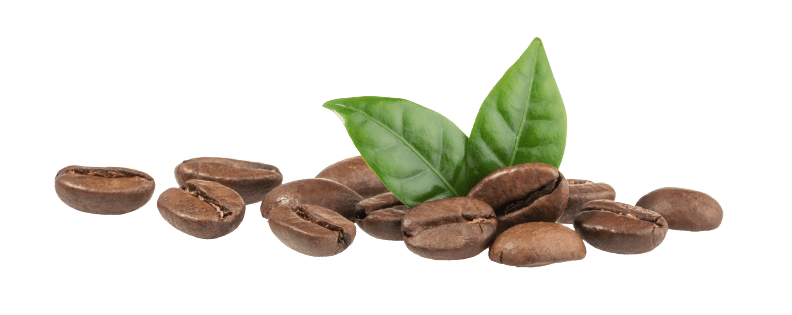
However, there is no significant association between coffee consumption and gastric, colorectal, colon, rectal, ovarian, thyroid, breast, pancreatic, oesophageal, or laryngeal cancer, and lymphoma or glioma.
What Is the Appropriate Dose of Coffee?
A dose less than 400 mg daily is considered safe and effective for adults. The amount should not exceed 200 mg daily in pregnant women, breastfeeding mothers, and children.
What Are the Side Effects of Coffee?
Side effects are extremely rare when the dose is below 400 mg per day in adults. However, at high doses, it is possibly unsafe.
Some side effects of coffee are as follows:
- Insomnia
- Increased heart rate
- Increased breathing rate
- Nervousness
- Restlessness
Also see: Are Caffeine Pills Safe?
What Is Kratom?
Kratom (Mitragyna speciosa) is a tree indigenous to Southeast Asia. Kratom leaves have been used in Thailand, Vietnam, Indonesia, and other Asian countries since ancient times. As of today, it is still very popular among heavy workers to prevent exhaustion and improve mood.
Kratom contains more than 50 alkaloids, but the most abundant is mitragynine.
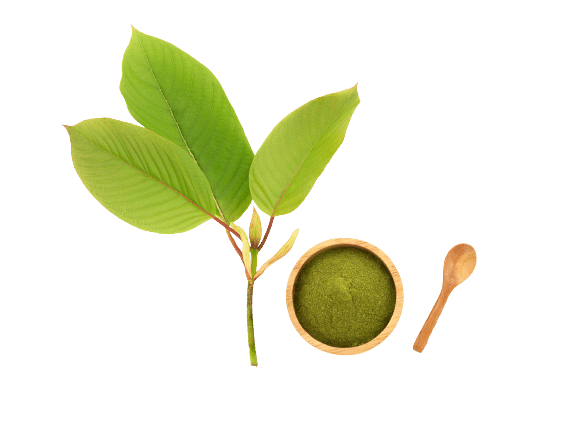
Mitragynine is converted to 7-hydroxymitragynine in vivo. Mitragynine and 7-hydroxymitragynine act as partial agonists at mu-opioid receptors [8]. This leads to various effects similar to opioids, e.g., anxiolysis, euphoria, and sedation. Despite this, kratom is not an opioid. It works on many other systems and is nowhere near as dangerous or addictive.
Kratom is unique because it has stimulating and sedating effects, depending on the dose. A smaller amount is generally stimulatory, and a larger dose causes significant sedation.
What Is Kratom Used For?
Kratom has a long history of medical uses that range from infection and bladder disease, fevers, diarrhea, diabetes, fatigue, and mental health disorders. Now, kratom is used for several clinical purposes:
What Is the Proper Dose of Kratom?
The dose of kratom depends on several factors, such as weight, strain, and desired effect. Lower doses are considered stimulatory, and higher doses are essentially sedative.
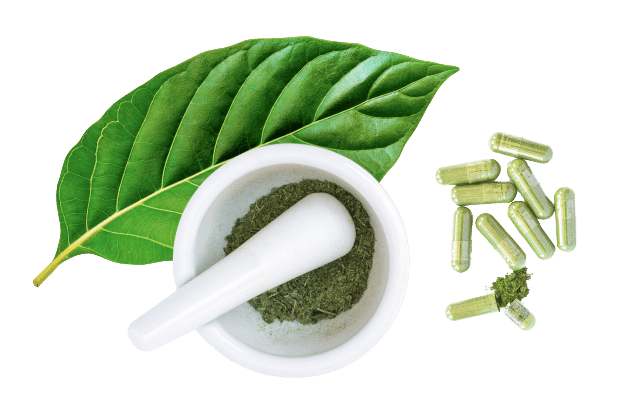
Novices should start with a low dose. The amount can slowly increase as the body adapts to a certain dose. However, you should avoid any dose above 12 grams.
What Are the Side Effects of Kratom?
Severe side effects following an average dose of kratom are highly unlikely. However, higher doses can cause many adverse reactions, such as:
- Agitation
- Anxiety
- Constipation
- Dizziness
- Headaches
- Nausea
- Tachycardia (fast pulse rate)
- Liver injury
- Vomiting
Fortunately, most side effects are easy to avoid. Take breaks, avoid combining kratom with other medications, and use as little as possible. Doing this will keep you comfortable and will help you avoid addiction.
Know the signs of kratom addiction and back off if you feel it’s getting out of control. Most people don’t have much of a problem since this addiction is not as strong or dangerous as an addiction to opiates.
What Are the Different Types of Kratom?
There are several types of kratom, also called strains. The classification is done based on the color of the mid-vein of the leaves. On this basis, kratom strains fall into the following types:

White Vein Kratom
White vein kratom boosts energy, improves concentration and performance, and uplifts mood. The effects are due to a high concentration of mitragynine.

Red Vein Kratom
Red vein kratom is used for its pain relief and calming effects and is the most popular form of kratom. The effects are due to a high concentration of 7-hydroxymitragynine.

Green Vein Kratom
Green strains are the middle option between white and red strains. They produce stimulating and nootropic effects or sedation, but to a lesser degree and depending on the dose.

Yellow Vein Kratom
Yellow strains usually possess the qualities of green vein kratom, but the effects are longer-lasting and often mellower.

Key Takeaways: Kratom & Coffee
Kratom and coffee have a lot in common. Combining them is like combining two drugs that perform either the same or opposite task, depending on the dose of these drugs.
Either they’ll cancel each other out, or you’ll end up far too stimulated, increasing the risk for heart palpitations, anxiety, nausea, and others.
The additive or subtractive effect of the drugs is not always desirable, so it is best to take these drugs at different times. However, consult your doctor first.
- Kamble, S. H., Sharma, A., King, T. I., León, F., McCurdy, C. R., & Avery, B. A. (2019). Metabolite profiling and identification of enzymes responsible for the metabolism of mitragynine, the major alkaloid of Mitragyna speciosa (kratom). Https://Doi.Org/10.1080/00498254.2018.1552819, 49(11), 1279–1288.
- Perera, V., S Gross, A., & J McLachlan, A. (2012). Measurement of CYP1A2 activity: a focus on caffeine as a probe. Current drug metabolism, 13(5), 667-678.
- Fredholm, B. B. (1995). Adenosine, Adenosine Receptors and the Actions of Caffeine *. Pharmacology & Toxicology, 76(2), 93–101.
- Spiller, G. A. (Ed.). (1998). Caffeine (pp. 225-231). Boca Raton, FL, USA:: CRC Press.
- What is Coffee? (n.d.). Retrieved April 30, 2022, from https://www.ncausa.org/About-Coffee/What-is-Coffee
- Pharmacology of Caffeine – Caffeine for the Sustainment of Mental Task Performance – NCBI Bookshelf. (n.d.). Retrieved April 30, 2022, from https://www.ncbi.nlm.nih.gov/books/NBK223808/
- Poole, R., Kennedy, O. J., Roderick, P., Fallowfield, J. A., Hayes, P. C., & Parkes, J. (2017). Coffee consumption and health: umbrella review of meta-analyses of multiple health outcomes. The BMJ, 359, j5024.
- Obeng, S., Wilkerson, J. L., León, F., Reeves, M. E., Restrepo, L. F., Gamez-Jimenez, L. R., Patel, A., Pennington, A. E., Taylor, V. A., Ho, N. P., Braun, T., Fortner, J. D., Crowley, M. L., Williamson, M. R., Pallares, V. L. C., Mottinelli, M., Lopera-Londoño, C., McCurdy, C. R., McMahon, L. R., & Hiranita, T. (2021). Pharmacological Comparison of Mitragynine and 7-Hydroxymitragynine: In Vitro Affinity and Efficacy for μ-Opioid Receptor and Opioid-Like Behavioral Effects in Rats. Journal of Pharmacology and Experimental Therapeutics, 376(3), 410–427.




